6th October 2015
Alor Kecil Harbour where the Festival Bahari Alor 2015 takes place
This festival was held the first time in October 2015 with hopes of better preparation and organisation for the next second year and in the future.
Kepa Island around 3 minutes boat ride from Alor Kecil Harbour where the Ritual of Pou Hari is held
Where: Pulau Kepa and Desa Alor Kecil, Alor Barat Laut District, Alor Regency, Nusa Tenggara Timur Province.
When: Annual event. Check the schedule at www.indonesia.travel
Event: Ceremonial Tradition Pou Hari and Maritime Ceremonial Gala Soro
How: Take a flight to Kupang (KOE) and continue with smaller aircrafts to Alor (ARD)
What:
Pou Hari
Pou means give food and Hari means the sea ruler. Pou Hari: A ceremonial tradition of giving food to the sea ruler. This tradition is owned by the Manglolong tribe. Their beliefs of ancestors came from the Hari (the sea ruler) descendants that lives in Kepa island. The Manglolong Tribe lives and grow close by with the Gei Lae Tribe and Mudiloang Tribe in Alor Kecil Village until today. The distance between Kepa island and Alor Kecil Village, Alor island is only 3 minutes away with a boat. The purpose of the tradition is to give respect to their ancestors every year by giving food and praying for protection and blessings for all the local citizens. Besides that, it is also held to maintain harmony between the sea people and land people. This tradition has been held since their ancestors and when the kings were still ruling that time.
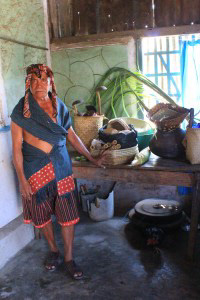
The food offerings , eating and drinking utensils

Traditional dancing
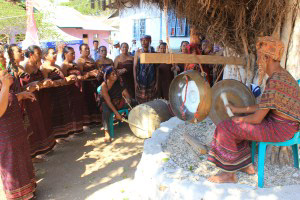
Lego-lego dance

Lego-lego dance and music

Lego-lego traditional dance
The food offerings dedicated for their ancestors are a goat, a chicken, rice, and water. There were also music instruments and eating and drinking utensils that need to be stored along with the food offering overnight before the ritual day at the Kamusi traditional house of Manglolong Tribe. Before the ritual was done, there were traditional dance performed by the Manglolong Tribe called lego-lego.
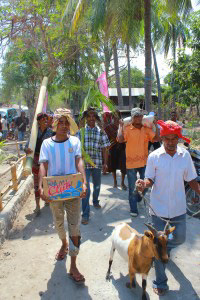
The locals carry the food offerings towards Kepa Island

All sorts of preparations for the offerings

Crossing by boat from Alor Kecil harbour towards Kepa Island

Making fire in a traditional way with bamboo
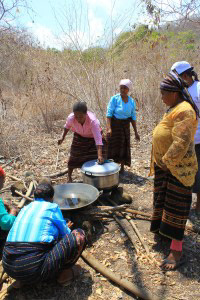
Cooking rice and goat and chicken meat after the sacrifice ritual
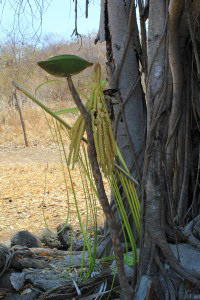
The part of food offering placed on a Misbah

The local participants for Pou Hari and Gala Soro
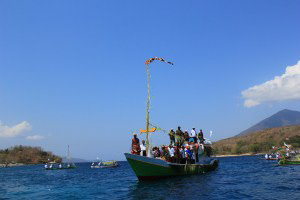
Taking the food offerings to Kepa island where the ritual and prayer will be held
The head of tribe will instruct the people to carry all the food offering and utensils that were stored over night to the location ritual at Kepa Island. After the offering and praying was done successfully including the sacrificing of the goat and chicken, the cooked rice and meat was given for all the participants as a symbol of the food offering acceptance by their ancestors.

The profile of Malolong Tribe

The profile of Malolong Tribe

The profile of Malolong Tribe

The profile of Malolong Tribe
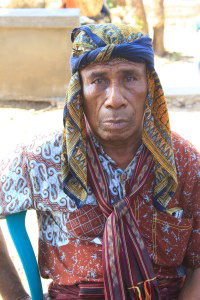
The profile of Malolong Tribe
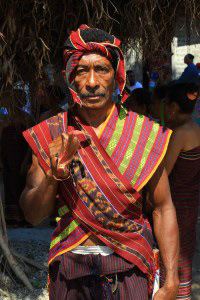
The profile of Malolong Tribe
Gala Soro
Gala Soro is a maritime ceremonial in welcoming the king or war commander and his soldier that won from a battle.
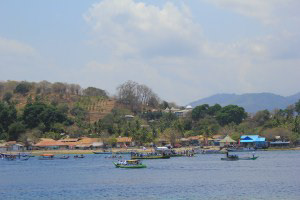
Gala Soro, picture taken from Kepa Island

Traditional dancing after the Gala Soro ceremony
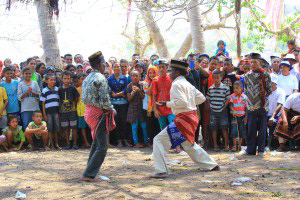
Traditional Martial Art called Pencak Silat Kontau
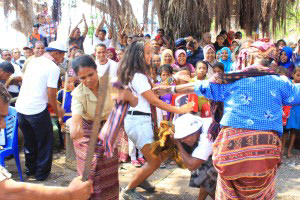
I was given a traditional woven from Alor around my neck as a symbol that I had to join the traditional dance.
The festival successfully collected around 50 boats that were participated by the locals. It was divided into 2 groups. The first group of 30 boats were divided into 1 main boat that have 1 king or war commander with his 8 soldiers and guarded by 29 boats of his soldier. And the second group of 20 boats were divided into 1 Gala Soro main boat that is guarded by 19 boats that are ready to welcome the first group of 30 boats. The main boat of Gala Soro with its 19 escorted boats will be decorated and filled with traditional dancers and music instruments such as tambur and gendang that will pick up the king or war commander in the middle of the sea with traditional dancing and music heading the beach. The event is closed by the lego-lego dance joined by the women that waited for the king and soldier to come from war.

The local participants ready for Pou Hari and Gala Soro
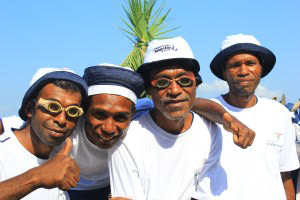
The local participants wearing traditional goggles made from wood and glass

The scenery from Kepa Island
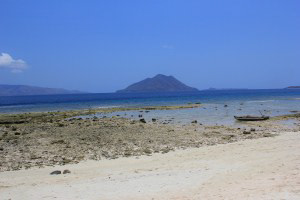
The scenery from Kepa Island
Critics:
The festival promised us that the members of Gala Soro will wear traditional costumes, unfortunately we didn’t see their traditional customs instead we saw all the members wearing white shirts. And the event was a little bit out of the schedule where we should have finished the Pou Hari part first but at the other side the Gala Soro was already presented at the beach of Alor Kecil. Hopefully in the next year it will be well organised and the preparation of traditional costumes are well presented, so the tourists will learn the destinations culture.
All pictures are taken by Fiona Callaghan, unless there is Fiona Callaghan in it.